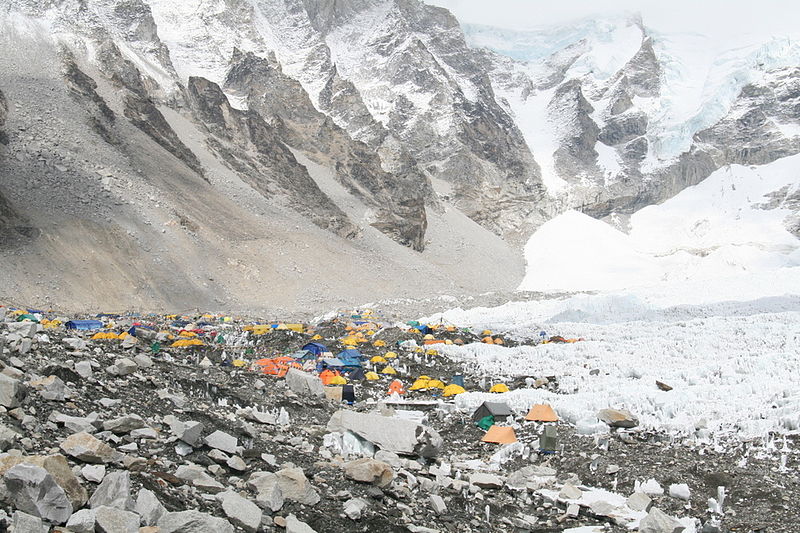
Climbing Mount Everest can be a relatively expensive undertaking for climbers. Climbing gear required to reach the summit may cost in excess of US$8,000 and most climbers also use bottled oxygen, which adds around $3,000. The permit to enter the Everest area from the south via Nepal costs $10,000 to $25,000 per person, depending on the size of the team. The ascent typically starts in one of the two base camps near the mountain, both of which are approximately 100 kilometres (60 mi) from Kathmandu and 300 kilometres (190 mi) from Lhasa (the two nearest cities with major airports); transferring one's equipment from the airport to the base camp may add as much as $2,000.Beyond this point, costs may vary widely. It is technically possible to reach the summit with minimal additional expenses, and there are 'budget' travel agencies which offer logistical support for such trips. However, this is considered difficult and dangerous (as illustrated by the case of David Sharp). Many climbers hire "full service" guide companies, which provide a wide spectrum of services, including acquisition of permits, transportation to/from base camp, food, tents, fixed ropes, medical assistance while on the mountain, an experienced mountaineer guide, and even personal porters to carry one's backpack and cook one's meals. The cost of such a guide service may range from $40,000 to $80,000 per person.Since most equipment is moved by sherpas, clients of full-service guide companies can often keep their backpack weights under 10 kilograms (22 lb), or hire a sherpa to carry their backpack for them. This can be contrasted with expeditions to less commercialized peaks (for example, climbers attempting Mount McKinley are often expected to carry backpacks over 30 kilograms (66 lb) and occasionally to tow a sled with 35 kilograms (77 lb) of gear and food.According to Jon Krakauer, the era of commercialization of Everest started in 1985, when the summit was reached by a guided expedition led by David Breashears that included Richard Bass, a wealthy 55 year old businessman and an amateur mountain climber with only 4 years of climbing experience.By the early 1990s, multiple companies were offering guided tours to the mountain. Rob Hall, the mountaineer who died in the 1996 disaster, had successfully guided 39 clients to the summit prior to that incident.The degree of commercialization of Mount Everest is a frequent subject of criticism. Jamling Tenzing Norgay, the son of Tenzing Norgay, said in a 2003 interview that his late father would have been shocked to discover that rich thrill-seekers with no climbing experience were now routinely reaching the summit:
No comments:
Post a Comment